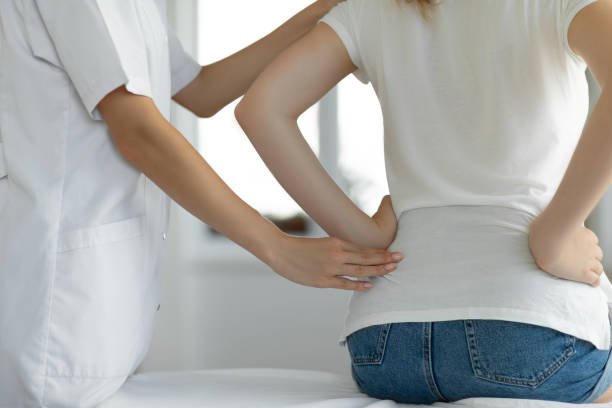Conditions
Low Back Pain
Low Back Pain
Low back pain is pain in the lumbar region of your spine, located in the area between the top of your pelvis and your lower ribs. Sometimes issues related to your low back can radiate symptoms into your hips and legs.
Low back pain is extremely common, and researchers estimate that nearly every person will experience a low back pain episode in their lifetime. The average 1 year prevalence is 37% in adults, and it peaks in middle age. Low back pain is a major global health issue, as it is the second cause of disability worldwide. Some people experience severe episodes that significantly impact their function, while others have multiple and more frequent low-moderate intensity episodes that have a large cumulative effect on their quality of life over time.
Low back pain is one of the most frequent conditions that Chiropractors treat, and a major part of Chiropractic training is focused on helping people with low back pain using conservative treatment options.
Causes of Low Back Pain
-
Strain to one or more muscles of the lower back, usually following repetitive, traumatic, or postural loads.
Chiropractors are able to use soft tissue therapies, and exercises like posture modification, mobility, and strengthening to help with these types of injuries.
-
A sprain to the ligaments or joint capsules of the low back. This is usually present after trauma such as a car accident, or sporting injury.
Treatment often involves hands on therapy in addition to exercise therapy to help support ligaments through the healing process.
-
Injury or irritation to the joints in the low back. This is a very common type of acute and chronic low back pain, and can be caused by either postural, repetitive, or traumatic loads. Often this type of pain is felt close to the midline of the spine, and can radiate into the hips or upper legs as a deep and achy pain.
Chiropractors frequently treat this type of back pain by using joint-specific therapies like manipulation, and mobilization. This type of back pain also responds well to certain exercise therapies like posture modification, mobility, strengthening, and muscle control exercises.
-
Irritation or injury to the upper pelvic joint, located on each side of the lower lumbar spine where it meets the pelvis. Often described as “lower low back pain”. This pain can be very intense and often comes and goes with specific positional or movement loads. Irritation of this joint often has to do with either too much or too little muscular support around the pelvic joints. It is common to have SI joint pain during or after pregnancy.
In the case of too much muscular support, the joints may be compressed and treatment involves hands on therapies to the joint(s) and supporting muscles with mobility exercises.
When not enough muscular support is present, core, hip, and low back muscle control and strengthening exercises are often needed to help stabilize the joint(s).
-
Disc injuries include disc bulges, and herniations. Although disc-related injuries can be more difficult to treat and have a longer recovery time, they still respond well to treatment in the majority of cases.
Treatment of disc issues often requires disc-specific assessment and exercise therapy for best results. This usually involves the use of directional preference, neurodynamic, posture, muscle control, and lumbar strengthening exercises as the main components of treatment. In disc injuries, hands on therapy usually only plays a supportive role.
-
Sciatica involves sharp, burning, or stabbing pain that radiates into the leg, usually below the knee. It is often associated with numbness and tingling.
Sciatica is technically a symptom, not a diagnosis, so although the leg pain is often the worst part, treatment works best when it identifies the source of sciatic nerve irritation. This is most often in the low back, followed by the hip.
-
Spinal stenosis involves pain in the low back and leg due to the spinal canals that our nerves run through decreasing in size as we age. Chiropractors are able to help with lateral spinal stenosis where one or more nerve roots on the side of the spine are compressed. This usually involves specific nerve-relieving exercises to offload sensitized nerve roots, posture modification to reduce nerve compression, and core and low back strengthening to better support the spine.
-
Osteoarthritis of the spine is more common as we age, and overlaps with other issues as it effects our joints and disc space. Treatment often involves manual therapy for relief, and an exercise plan to reduce progression and provide muscular support the arthritic joints.
Benefits of Chiropractic Care for Low Back Pain
For Acute Low Back Pain:
Faster reduction in symptoms - faster relief of pain, stiffness, tightness
Quicker overall recovery time
Reduced risk of transitioning to a chronic issue
For Chronic Low Back Pain:
Improved symptom control - on average symptoms less intensity, less frequent, and flare ups don’t last as long
Reduced disability - improved function at work, home, and with leisure activities
Improved quality of life
Chiropractic Care is also associated with:
Reduced medication use, including opioids
Reduced days off work due to pain or injury
Reduced need for imaging, and surgery

